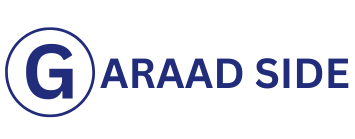Introduction: Why Digital Literacy Matters Now More Than Ever
In 2025, the world is more connected, digital, and fast-paced than ever before. Whether you’re a student, a professional, or someone simply trying to navigate daily life, being digitally literate is no longer optional — it’s essential. Digital Literacy goes beyond knowing how to use a computer; it’s about understanding how technology works, how to communicate effectively online, how to evaluate digital information, and how to stay safe in a world dominated by data.
This guide dives into what Digital Literacy means in 2025, the skills it includes, why it matters, and how you can strengthen your digital competency to succeed in education, work, and life.
Section 1: What Is Digital Literacy?
Digital Literacy refers to the ability to use, understand, and evaluate digital technologies in a competent and responsible manner. It covers more than technical know-how — it includes critical thinking, ethics, communication, and adaptability.
Core Elements of Digital Literacy:
- Technical Proficiency: Knowing how to use devices, apps, and software.
- Information Literacy: Ability to evaluate online sources for credibility.
- Digital Communication: Effective use of email, messaging, and social platforms.
- Online Safety & Privacy: Understanding data security, passwords, and privacy settings.
- Ethical Usage: Respecting copyright, avoiding plagiarism, and practicing digital etiquette.
In short, digital literacy empowers people to use technology not just as consumers, but as creators, problem-solvers, and responsible digital citizens.
Section 2: Why Digital Literacy Is Trending in 2025
The demand for Digital Literacy is at an all-time high, driven by:
- Remote Work Expansion: Millions of jobs now require strong digital collaboration skills.
- E-Learning Growth: Students must navigate online platforms, research tools, and digital libraries.
- Cybersecurity Risks: With more personal data online, awareness of digital safety is critical.
- AI Integration: Workers need to adapt to AI-driven platforms and automation tools.
- Global Competitiveness: Nations and individuals with higher digital literacy levels perform better economically and socially.
Section 3: The Benefits of Strong Digital Literacy
- Career Advancement: Employers prioritize digitally literate candidates.
- Educational Success: Students with digital skills access resources, complete assignments, and collaborate better.
- Informed Decision-Making: Ability to filter reliable vs. fake information.
- Better Communication: Clearer, faster, and more effective digital interactions.
- Personal Security: Awareness of scams, phishing, and safe browsing practices.
- Empowerment: Confidence in using new technologies instead of fearing them.
Section 4: Digital Literacy Skills Everyone Needs in 2025
- Basic Computer and Mobile Skills – Navigating operating systems, installing apps, using productivity software.
- Search and Research Skills – Finding accurate information, using databases, avoiding misinformation.
- Cybersecurity Basics – Recognizing threats, using strong passwords, enabling 2FA.
- Digital Collaboration – Using Zoom, Teams, Slack, and Google Workspace effectively.
- Content Creation – Writing blogs, editing videos, designing presentations.
- Data Awareness – Understanding data privacy policies and how personal information is used.
- Critical Thinking Online – Questioning sources, fact-checking, and avoiding echo chambers.
Section 5: Examples of Digital Literacy in Action
- Education: A student uses Google Scholar to research, then creates a presentation with Canva.
- Workplace: A remote employee collaborates through Slack, Trello, and Zoom.
- Everyday Life: A parent uses online banking securely, sets parental controls, and shops responsibly online.
- Civic Participation: Citizens evaluate online political news before sharing, reducing misinformation.
Section 6: Challenges of Digital Literacy
While critical, digital literacy faces barriers:
- Digital Divide: Not everyone has equal access to technology.
- Generational Gap: Older generations may struggle to adapt.
- Information Overload: The internet is full of both useful and misleading content.
- Privacy Concerns: Many users underestimate risks of data collection.
- Rapid Change: Tech evolves so quickly that skills must constantly be updated.
Solutions: Governments, schools, and organizations must offer training, invest in digital infrastructure, and promote lifelong learning.
Section 7: Tools and Platforms for Building Digital Literacy
- Google Digital Garage: Free courses on online marketing, data, and tech skills.
- Coursera & edX: Offer structured digital literacy and IT programs.
- Khan Academy: Resources for younger students.
- Duolingo & Similar Apps: Demonstrate gamified learning techniques.
- National Digital Literacy Programs: Many governments run initiatives to bridge gaps.
Section 8: The Future of Digital Literacy
Looking ahead, Digital Literacy will expand to cover:
- AI Literacy: Understanding how to work with and evaluate AI tools.
- Metaverse Skills: Navigating virtual worlds for education and work.
- Data Literacy: Analyzing and interpreting big data responsibly.
- Sustainability Awareness: Understanding the environmental impact of digital technology.
- Global Collaboration: Using tech to solve worldwide problems together.
In other words, Digital Literacy will evolve beyond just operating devices into a broader life skill, central to global citizenship.
Section 9: How to Improve Your Digital Literacy in 2025
- Take Online Courses – Free platforms like Coursera, Google, and Microsoft offer certificates.
- Practice Daily – Use new apps, explore settings, and experiment with tools.
- Stay Informed – Follow tech blogs, podcasts, and digital news sources.
- Join Communities – Participate in online forums and peer-learning groups.
- Teach Others – Sharing knowledge reinforces your own understanding.
- Protect Yourself – Update devices, use antivirus, and learn cybersecurity basics.
Section 10: Action Plan for Educators and Organizations
- Integrate Digital Literacy in Curricula: Make it a core subject in schools.
- Provide Lifelong Learning Opportunities: Training for all age groups.
- Promote Safe Practices: Awareness campaigns on privacy and cyber safety.
- Bridge the Gap: Ensure underserved communities gain access to devices and internet.
- Measure Progress: Use assessments to track digital literacy improvement.
Conclusion: Building a Strong Future with Digital Literacy
Digital Literacy in 2025 is more than a skill — it’s a survival tool. From education to careers to everyday living, the ability to navigate the digital world empowers individuals and societies to thrive. Those who invest in digital literacy will gain opportunities, while those left behind risk exclusion from modern life.
By strengthening Digital Literacy, we not only adapt to the present but prepare for a future shaped by AI, global connectivity, and ever-evolving technologies.

